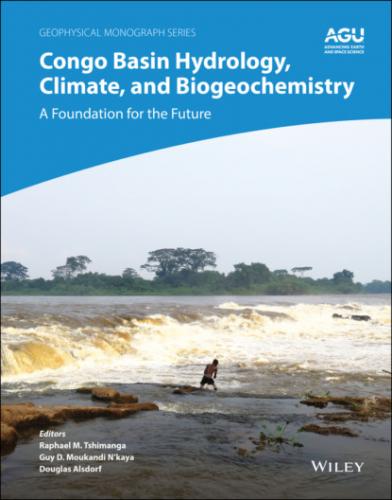Figure 3.13 Months of maximum rainfall (left) and minimum rainfall (right), based on CHIRPS2 averages for the period 1981 to 2019.
3.4.4. The Diurnal Cycle
Because of the dominance of mesoscale convective systems (MCSs) over the Congo Basin (see Section 3.6), a fair amount of nocturnal rainfall is anticipated. Here the diurnal cycle is examined using three‐hourly data from TRMM 3B42 V7. April and October, peak rainy months in much of the region, are examined. These do indicate that the rainfall maximum is at night over large parts of the region.
Figure 3.14 shows the time of maximum rainfall averaged over the years 1998 to 2014. TRMM times are UTC, which is one hour earlier than local time in the west, two hours earlier in the east. Afternoon hours are indicated in yellow, nighttime hours in deep blue. Light blue is late afternoon/early evening. There is a clear pattern in which rainfall in the lowest area of the central basin tends to peak during the afternoon, but a nocturnal peak is evident in surrounding areas. The area with afternoon rains is markedly greatly in October than in April.
This pattern is to some extent consistent with the patterns of vertical shown in Figure 3.2. In the early evening hours there is a contrast in vertical motion, and presumably rainfall, between the central and basin and the highlands to the north and east. A strict correspondence is not to be expected, as Figure 3.2 represents a three‐month average and one time of day. However, the comparison hints at the role of topography in controlling the diurnal cycle.
Figure 3.14 The diurnal cycle of rainfall over the Congo Basin based on TRMM 3B42 for the years 1998 to 2014. TRMM is indicated in UCT (i.e., Z), with local time being roughly one hour later in western regions and two hours later in eastern regions. Afternoon hours are indicated in yellow, nighttime hours in deep blue. Light blue is late afternoon/early evening.
Source: Jackson et al., 2009. © American Meteorological Society. Used with permission.
3.4.5. Spatial Variability of Rainfall
Prior work (e.g., Nicholson et al., 2012) has examined large‐scale rainfall variability over Africa by delineating 90 regions that are relatively homogeneous with respect to interannual variability. The Congo Basin and surrounding areas include eight of these regions.
The regions in the subtropical portions of the continent (e.g., the Sahel) and in eastern equatorial Africa are highly homogeneous. That is, the individual stations correlate very highly with the region mean. The spatial coherence of rainfall variability (correlations among regions) is also strong in subtropical areas, with broad expanses of the continent experiencing drought or wetter conditions in the same years.
In comparison, the homogeneity within the eight regions in and around the Congo Basin is relatively weak (Nicholson, 1986) and the very low spatial coherence of rainfall variability on interannual time scales is unique within Africa. This is evident both in inter‐regional correlations (e.g., Dezfuli & Nicholson, 2013) and inter‐station correlations. Figure 3.15 illustrates the former by correlating rainfall in individual regions (see Nicholson et al., 2018b) with rainfall for a much larger geographical sector. For the Sahel, East Africa, southern Africa, and central Africa, correlations typically range from roughly.6 to.9, indicating strong coherence over very large areas. The Congo Basin stands out with correlations below.4.
Figure 3.15 Correlation of annual values of regional rainfall (delineated by thin lines) with rainfall averaged for the larger sector (bold solid lines) in which the regions are found. Correlations are based on the period 1930 to 1989.
Figure 3.16 shows for the same sectors the correlation between stations as a function of distance during the main rainy seasons. The extremely low correlations over the Congo Basin clearly stand out. Within 100 km they fall to roughly.26 for MAM and.13 for ON, compared to approximately.4 to.7 for other locations. Within 2 km they fall to around.2 over the Congo, while elsewhere correlations remain much higher (.4 to.5 in most cases) for inter‐station distances up to 5 km.
A full understanding of the meteorology of the Congo Basin requires an understanding of the reasons for the low spatial coherence, a characteristic that suggests very localized influences on rainfall. This is consistent with the results of other studies suggesting that links to large‐scale forcing are very weak over the Congo Basin (e.g., Dezfuli & Nicholson, 2013; Nicholson & Dezfuli, 2013; Pohl & Camberlin, 2006). A potential explanation for the low spatial coherence of rainfall variability within the Congo Basin may be the strong orographic effects (Jackson et al., 2009). These interact with the large‐scale flow to produce a complex pattern of low‐level winds and ascent, with large changes over small distances.
Other factors that might contribute include the dominant contribution of very large storms, the impact of the MJO (e.g, Berhane et al., 2015; Raghavendra et al., 2020), and the contribution of convectively coupled equatorial waves (e.g., Sinclaire et al., 2015). Zipser et al. (2006) calculated that roughly 3% of the rainfall systems provide 60 to 70% of the region’s rainfall, suggesting a strong impact of a “hit” or “miss” by one or two storms. Our preliminary work on the MJO and convectively coupled equatorial waves has shown that the contribution of these phenomena to rainfall shows substantial geographical variation over equatorial Africa. We have also shown that of the equatorially “trapped” waves, only the Kelvin wave plays a major role in the region.
Figure 3.16 Inter‐station correlation during the period 1930 to 1989 as a function of distance between stations (in km).
Source: Jackson et al., 2009. © American Meteorological Society. Used with permission.
3.5. INTERANNUAL VARIABILITY
The interannual variability of rainfall in equatorial Africa is relatively low, compared to other regions. Figure 3.17 presents the coefficient of variation (standard deviation divided by the mean), based on CHIRPS2 for the years 1981 to 2019. The coefficient of variation is lowest over the Congo Basin and surrounding regions, generally between 10 and
